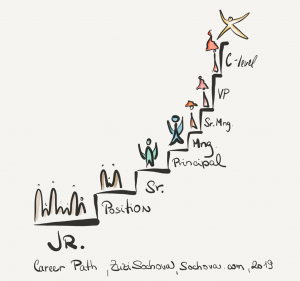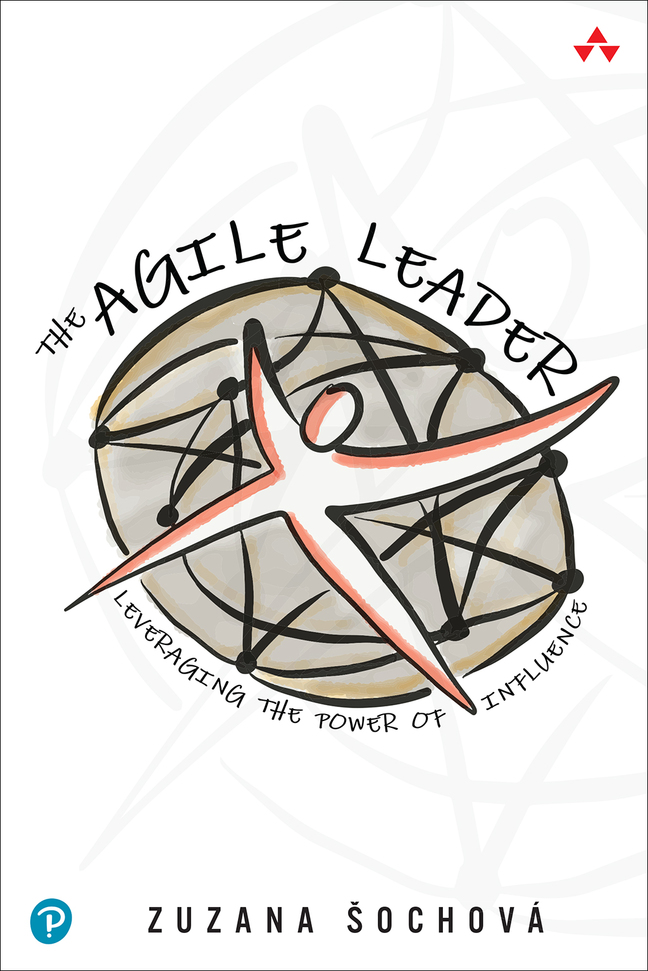The third blog from this Agile HR series focuses on positions, career paths, and salaries. As I already mentioned in the first Agile HR blog about hiring, positions are not that important in agile organizations as people collaborate, take over responsibility and become leaders as needed, not because they have it in the job description. In traditional organizations, it’s all about the position. We hire to fill the empty position, it designs what people do and don’t do, it shows the potential of who employees might become if they got a good evaluation and are promoted. And last but not least the position defines a rank of the salary.
 The whole concept breaks once you stop treat people like individuals and create a team environment where people self organize their work and collaborate based on their skills and abilities. Such shift quite naturally creates a need for fewer positions as for example in one Scrum Development team there are no roles, just team members. So your positions can follow the Scrum organizational design and instead of having the SW developer, SW tester, and analyst, maybe you can just have one position of SW Engineer. Or simply a team member. Every position potentially creates silos and gaps, dependencies, and the need for synchronization and hand-over. Nothing which would help you create high-performing teams.
The whole concept breaks once you stop treat people like individuals and create a team environment where people self organize their work and collaborate based on their skills and abilities. Such shift quite naturally creates a need for fewer positions as for example in one Scrum Development team there are no roles, just team members. So your positions can follow the Scrum organizational design and instead of having the SW developer, SW tester, and analyst, maybe you can just have one position of SW Engineer. Or simply a team member. Every position potentially creates silos and gaps, dependencies, and the need for synchronization and hand-over. Nothing which would help you create high-performing teams.
In more agile environments…
If reading the previous paragraph hasn’t created too big shock in your mind, you are ready for step two. Teams members have the same goals they contribute to, they do frequent peer reviews and hold each other accountable to improve their skills. In such environments, the only reason for positions and career paths is the direct correlation with the salary. The solution is obvious – decouple salaries and positions. In such case, you don’t need any positions at all, as the team roles are emergent, same as leadership. Salary can be linked to the peer feedback and individual value to the organization as a team member. It’s a startup mindset. Imagine for a while that you are not an employee but entrepreneur and every day you need to prove that you bring enough value to get paid. Stressful? Maybe. So be aware that every practice like this needs certain culture and organizational agility. I would not start with it the Agile journey. However, you can take it as a next step and be ready to move there when your organization is ready. On the other hand, if you feel you are ready, there are two tips on how to start. First is a hard choice of two options to the employees: stay because they believe in the change and are ready to take over the ownership and responsibility to succeed and achieve the organizational purpose or take a leaving package of x salaries and go. The people who stay are those with the right mindset and any transformation will be so much easier. Second is gradual. Start with decoupling the salaries from the positions. Sooner or later the positions become irrelevant so no one would miss them anymore if you remove them. You must have the courage to choose the first way. On the other hand, the second way only make your journey long and painful. But it all depends on what you want and where you are. Agile is not about practices, it’s about mindset. And this is very true for Agile HR or talent management as well. 
In agile organizations…
The more agile you become at the organizational level, the more flexible and dynamic is the team structure and the more difficult is to say what is the position or role. The more agile becomes the way you work, the higher need for transparency is created at every level. We can see what every person is doing and can challenge them and give feedback. Any employee can join any initiative but with all responsibility towards the organizational purpose. As nothing is hidden, it’s in a way controlled by everyone. Emergent servant leadership is the key part which links everything together and makes sure it creates harmony instead of chaos. Such environments are ready to make all salaries transparent and let employees be part of the decision. To be fair, not many companies got there, so you don’t have to do it all tomorrow. But you can still bet inspired 🙂

 Learn more about transforming organizations, leadership, and culture with Agile & Enterprise Coaching. Check our Scrum and Agile training sessions on Sochova.com. Grab a copy of The Great ScrumMaster: #ScrumMasterWay book and The Agile Leader: Leveraging the Power of Influence book.
Learn more about transforming organizations, leadership, and culture with Agile & Enterprise Coaching. Check our Scrum and Agile training sessions on Sochova.com. Grab a copy of The Great ScrumMaster: #ScrumMasterWay book and The Agile Leader: Leveraging the Power of Influence book.
Disclaimer: All I write on this blog is purely personal and has no relation with any position I have, used to have or will have in the future.
